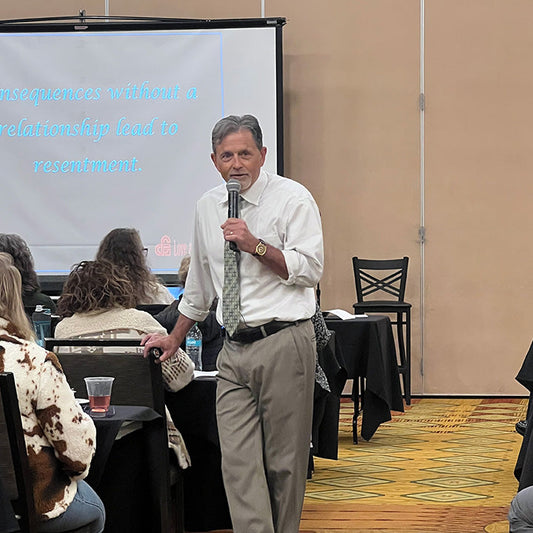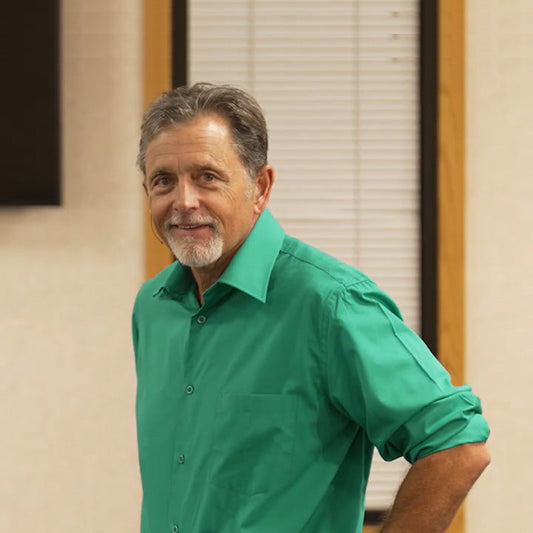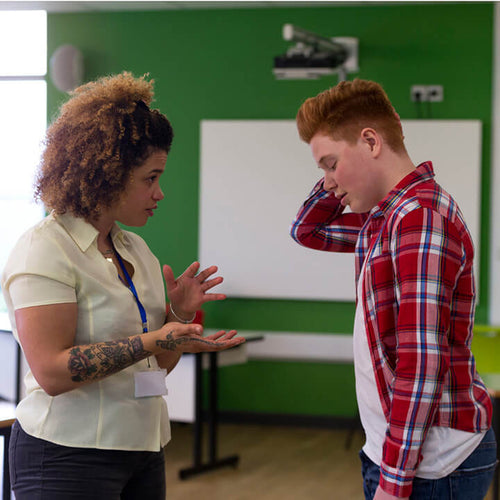In our previous blog I gave some tips about situational awareness and nipping problems in the bud before they become major issues. However, sometimes things can still get out of control in a classroom. This week we will look at three techniques that can help answer a question we get from many teachers, “How do I deal with disruptive behavior in my classroom?” These techniques are: Quick and Easy Classroom Interventions, Keep on Trucking, and Save the Consequences for the Big Stuff.
Quick and Easy Classroom Intervention Strategies
How do Love and Logic teachers prevent misbehavior? One way that they can do this is to rely on a variety of subtle actions designed to redirect the behavior while maintaining the flow of the lesson. We call these Quick and Easy Classroom Intervention Strategies. Below are some examples:
1. Begin with Nonverbal Interventions
- Use a signal – shake of the head, arm movement, etc.
- Walk toward the student while continuing to teach.
- Stand close to the student.
2. Use Empathy to Redirect Behavior
- Nonverbal – look sad or concerned.
- Verbal – try to lead with how you think the other person might be feeling as in, “That must be really upsetting?”
3. Use “I” Statements Instead of “You” Statements
- “I’ll start when…”
- “I will be happy to…”
Keep on Trucking
One common behavior I see with ineffective teachers is that they too frequently stop teaching. Ineffective teachers stop to provide rewards or to have a lengthy discussion with a student about their behavior. When this happens, who is setting the tone? Who is in charge? Take note of the following:
If students can get us to stop teaching,
they will always get us to stop teaching.
Highly effective teachers, Love and Logic teachers, apply their quick and easy classroom intervention strategies. Once applied, they keep on teaching. They stop for no longer than ten to fifteen seconds and then keep on trucking.
Save the Consequences for the Big Stuff
Some classroom management systems believe that every time a student misbehaves an immediate consequence should follow. How realistic is this belief? Trying to meet this standard leaves little time for teaching and can become overwhelming very quickly. Teachers are overwhelmed because they are responsible for teaching and classroom management.
Many teachers come to the point that they realize there isn’t enough time in the day to teach and to implement behavior management systems. They struggle thinking that they must deliver consequences immediately and for every infraction. Jim Fay, my dad, has helped many teachers with the following words:
“Save the consequences for the big stuff.
Use Quick and Easy Classroom Interventions for the little stuff.”
Using this approach, many teachers have been able to take control of their classroom and transform it into a genuine learning environment.
We hope this blog, and last week’s blog, have given you insight into how intervention strategies can help you keep control of your classroom. For more intervention strategies, listen to our audio, Quick and Easy Classroom Interventions. It contains 23 effective strategies that have proven effective for thousands of teachers!
Thanks for reading!


























